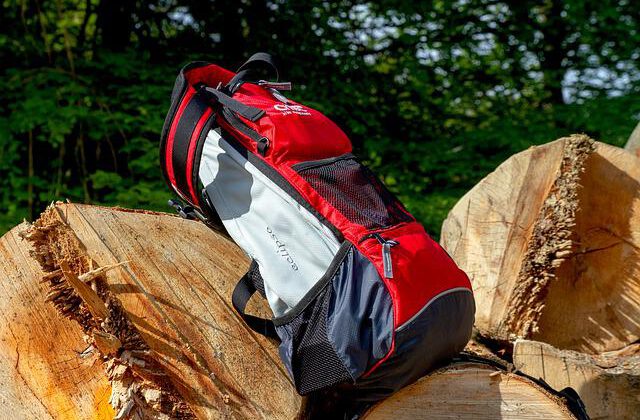
A go-bag is a kit that you pre-pack for unexpected evacuations. This site suggests that you have a 72-hour (or 96-hour) kit in addition to a go-bag.
What is the difference?
Your 72-hour kits will consist of essential items that you may need for 3-4 days without outside help. A scenario that can help you understand the need for a 72-hour kit is this:
Some event has occurred (an earthquake or EMP attack) that requires you to leave your home for whatever the reason, and you will probably have to do so on foot.
A 72-hour kit should contain enough food, water, and essential supplies to get you through the first 72-hours after an emergency. Each member of the family should have their own kit and be able to carry it.
Please click here for more information on what should be in your 72-hour kit.
In addition to food and water, you should have clothing, blankets, shelter (tent), first aid supplies, toiletries, cash, copies of important documents, a flashlight, cooking supplies (camping), and medications.
A 72-hour kit would resemble a backpack for a weekend hike into the backcountry.
HOW IS A GO-BAG DIFFERENT?
A go-bag is in addition to a 72-hour kit assuming that you have to evacuate by car or don’t need to travel far.
For instance, think of evacuating your home for several days due to the threat of a wildfire or flood. You won’t have much time to pack for an extended weekend at a hotel or relative’s house. In addition to the supplies in your 72-hour kit, a go-bag should supplement with items such as extra clothes, toiletries, and gear.
Your 72-hour kit has limited space, especially if the person that needs to carry it is a small child, elderly, or not very strong. You may only have room for one change of clothes.
Your go-bag could consist of:
- Extra clothing and shoes
- Larger size toiletries
- Extra shelter items, i.e., sleeping bags, inflatable pillows
- Outdoor cooking supplies
- Extended first aid supplies
- Medication
- Additional food, snacks, and water
- Emergency contacts
- Comfort items such as blankets and books
Does this seem a bit much?
Consider the people that needed to evacuate due to hurricanes or flooding. Some had to stay in large buildings or areas for several days. Having your own clothes and familiar items would bring much comfort.
During Hurricane Katrina in New Orleans, many residents took shelter in the Superdome, and others lived in the city streets. With high temperatures, limited supplies, no power, and unprepared government officials, the people quickly realized their predicament.
What would you want in your 72-hour kit and go-bag if you were in this situation?
Think back to the residents of Paradise, California, when a wildfire destroyed 19,000 homes and killed more than 80 people. This was a terrible tragedy. Sadly, looking back there were many mistakes made by officials, and people evacuated too late and became trapped.
Traffic was gridlocked, and people had to evacuate by foot.
Ask yourself how you would have prepared.
This is where the importance of self-reliance and family emergency planning comes in.
Learn from past mistakes and think about how you would handle the situation differently. Of course, 20/20 vision is perfect, and disasters don’t ever play out that way. Still, you can mentally prepare for something similar.
If you already have your go-bags ready in addition to your 72-hour kits, all you would need to do is grab other essential items and hit the road.
MAKE A LIST BEFOREHAND
Once an emergency strikes and your adrenaline increases, you probably won’t be thinking as clearly as you would like.
If you need to evacuate, what would you take in addition to your 72-hr kit and go bag?
In a calm moment, make a list of what you would put in your car in the small amount of time you have. Some items might be:
- Computers
- Backup drives
- Phones and chargers
- Original documents (birth certificate, social security, warranty, deeds, etc.)
- Extra cash/checkbook
- Larger portable water containers
- Photo Albums
- Jewelry
- Prescription medication
- Medical devices, i.e., oxygen tanks or CPAP machines
- Pet supplies, food, crate, leash, etc.
- Bikes
- Paper files/documents (home insurance, will, trust, contracts, life insurance)
- If you have a fireproof safe, are there items you would want to remove?
- Is there a special blanket or toy that would benefit a small child?
The items you choose to take will also depend on the type of emergency you are encountering. Think about what the risks are to your family and what items you would take based on each risk.
- Is is possible you could lose your home or you will not be able to return?
- How far do you have to travel?
- Will supplies be available to purchase?
This list will be unique to your family, so think carefully and get it down on paper. Post the list where it is easily accessible.
PRACTICE
Your family should be doing some practice emergencies and dry runs for potential situations. This helps everyone think more clearly during an actual emergency event.
Considerations
- Always keep your gas tank half-full.
- Take pictures of your home and valuables and store in cloud for insurance purposes.
WHAT SHOULD I PACK MY GO-BAG IN?
Visualize yourself walking through an airport. How are you carrying all of your gear?
You may have a large backpack with a rolling suitcase.
Or a backpack with a sling duffel over your shoulder.
How you choose to pack your go-bag, try to make it easy to manage. A rolling suitcase or duffel bag may be the best option.
